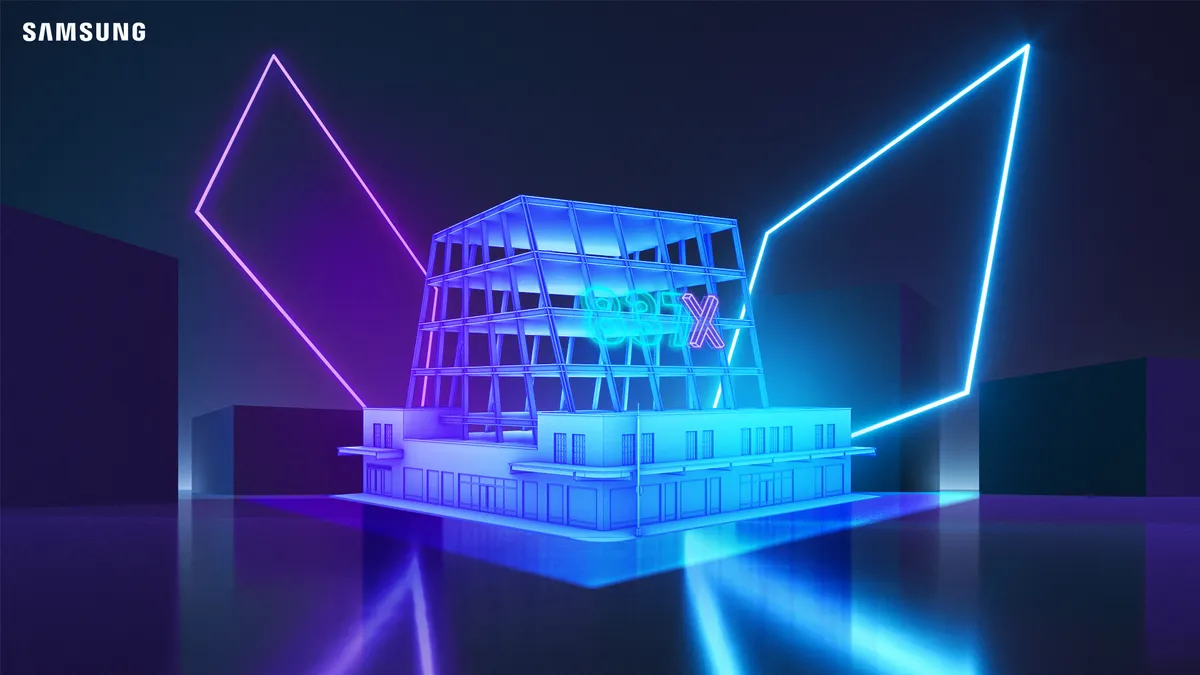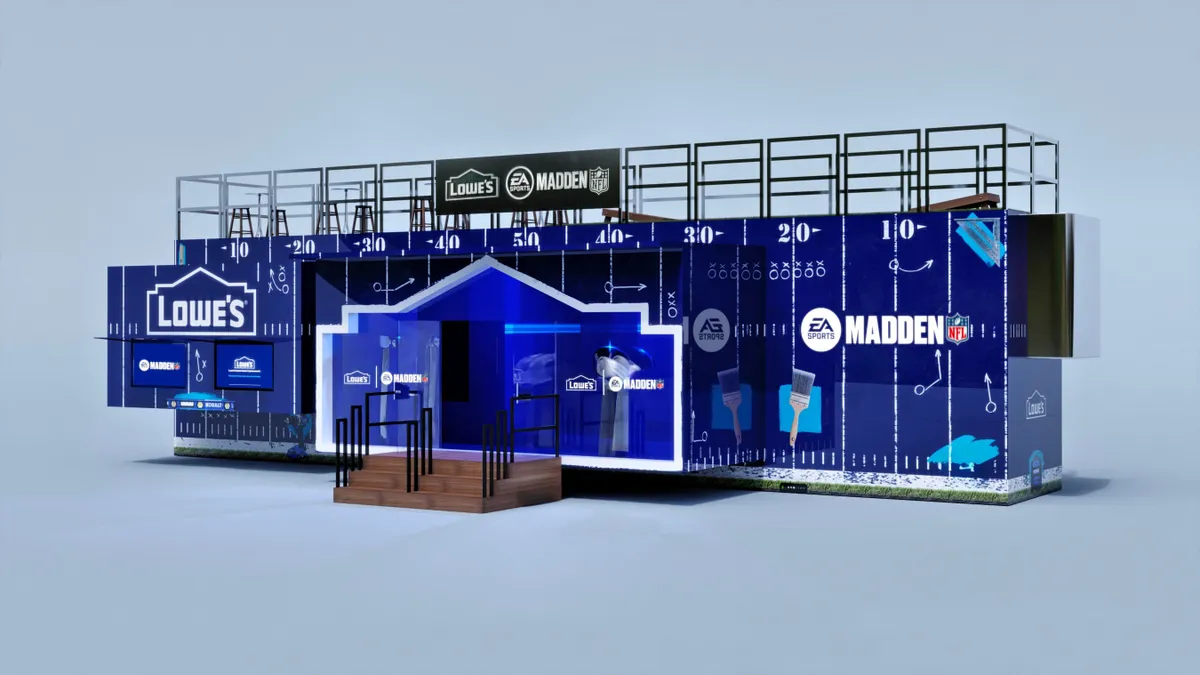Marketers are itching to see what's possible in the metaverse, and recent COVID-19 disruptions could create a fertile testing ground. As brands start to dip their toes into unproven pixilated waters, these experiments are a means to engage digital natives who are otherwise wary of interacting in person. They also could lay important groundwork for marketing services providers trying to devise best practices for a channel that remains firmly in its Wild West phase and might not realize its potential for years.
Ahead of the Consumer Electronics Show (CES) earlier this month, Samsung Electronics America planned to put part of its showcase in Decentraland, an open-source, blockchain-powered platform with virtual "plots of land" that users can play around in via digital avatars. Then, the omicron variant dealt a serious blow to the annual tech conference's in-person attendance — already peeled back from prior years — as multiple exhibitors pulled out at the last minute.
"Knowing that there would be a smaller contingent going to CES than in the past, hosting this experience inside of a metaverse world like Decentraland just made a whole lot of sense," said Keith Soljacich, vice president of content at Publicis Media, an agency that helped Samsung develop the activation. Razorfish, Samsung's digital agency of record, and The Community also worked on the effort using parent Publicis Groupe's "Power of One" approach.
Dubbed 837X, the experience took inspiration from the electronics marketer's flagship store at 837 Washington St. in New York City and went live Jan. 6. The virtual venue, one of the largest brand takeovers in Decentraland to date, featured attractions like a Connectivity Theater displaying Samsung's CES announcements and a Sustainability Forest promoting the company's recent tie-up with Veritree, a climate solutions platform. Guests could enter using 837X-branded nonfungible token (NFT) badges and participate in activities like a "mixed reality live dance party" and quests while acquiring further collectibles. Samsung put no paid media behind the activation.
"You announce a metaverse and expectations can fluctuate wildly from what that actually is going to mean. Ultimately, people may be disappointed," Soljacich said. "In this way, we showed up stealthily and unannounced, but also undiscovered. That really gave people a reason to say, 'I've got to go see what this is all about.'"
As demand for similar metaverse-minded integrations continues to climb among clients, Publicis Media will look to 837X as a reference point from which to build. Samsung for its part aims to port over the concept to "more people by launching a multiverse approach on new platforms" throughout the year, according to a press release.
"We've established the playbook for how brands can enter the metaverse space in a Web3 way," Soljacich said. "We want to continue to evolve the work we do with Samsung, but also to bring those best practices and learnings to the other brands we've worked on [and] customize an experience for them."
Devising a metaverse playbook
Though metaverse evangelists promise an unprecedented evolution of the internet and how consumers interface with it, brands can look to past strategies to get a better handle on what to bring to the table, according to Soljacich. Instagram pop-ups were one touchstone brought up by the executive. Despite being firmly planted in the real world, those experiences are tailored to be explored in a particular fashion, with the goal of getting participants to share content and spread word-of-mouth online.
Translating the pop-up idea into the metaverse unlocks additional possibilities — essentially whatever a given platform's computing processing power can handle while maintaining a stable user experience. But brands cracking into the space should still ensure they have a solid Web3 foundation beforehand rather than jumping in with no tech toolkit, according to Soljacich. Visitors to 837X could use their MetaMask or equivalent crypto wallets to log in and acquire and store collectibles. Those same assets are intended to play a part in future marketing activities rather than serving as one-offs, the latter being an avenue Soljacich said brands should avoid.
"We're very much about leveraging the NFTs we've distributed to keep bringing people back into future experiences," he said.
With the metaverse's extra degree of freedom and portability come pitfalls that agencies must clearly communicate to clients eager to hop in. Publicis Media has a best practices rulebook, but it's "ever-evolving" in line with the larger category, per Soljacich.
"We certainly did go through the risk assessment with Samsung," said Soljacich. "It's a risk to be on a platform that doesn't have the same safety controls in place from the more mature platforms that have built up over the years."
Decentraland provides monitoring tools and profanity filters that can assist marketers trying to keep their venues PG. But a lot of the brand safety guidelines are up to the company hosting the experience to enforce. That requires more careful planning but also potentially opens a greater degree of control.
"It was on us to deliver a brand-safe environment," Soljacich said. "We couldn't rely on the platform. We had to rely on our own protocols in place."
Community connections
Samsung 837X came together quickly compared to a traditional media campaign, with planning to implementation taking about six weeks, according to a Publicis spokesperson. But Soljacich emphasized that Publicis Media's content and innovation team keeps a constant ear to the ground on platforms like Decentraland and spaces like cryptocurrency Twitter so as not to be caught off-guard when the next hot Web3 item trends.
"It's a very different type of social listening. It's actually active community participation," Soljacich said. "It's delicate. You can jump into a space, not understand what the community is looking for and, in fact, have a negative impact on that experience."
Publicis was also not flying solo when it came to execution. The agency tapped a community of existing metaverse creators called Last Slice Collective to bring 837X to life. Last Slice Collective helped set up the virtual space and program the quests, while promoting the event to other users. The tie-up did the double duty of establishing 837X's tech backbone and influencer marketing. That's perhaps an atypical approach, but one marketers might consider when diving into nascent platforms where they don't yet have proprietary picks and shovels to rely on.
"That's how we were able to do this so quickly, how we were able to do it so successfully," said Soljacich of Last Slice Collective. "Ultimately, we relied on them to amplify and reinforce why Samsung is here, why they belong here and why the community should embrace it."























